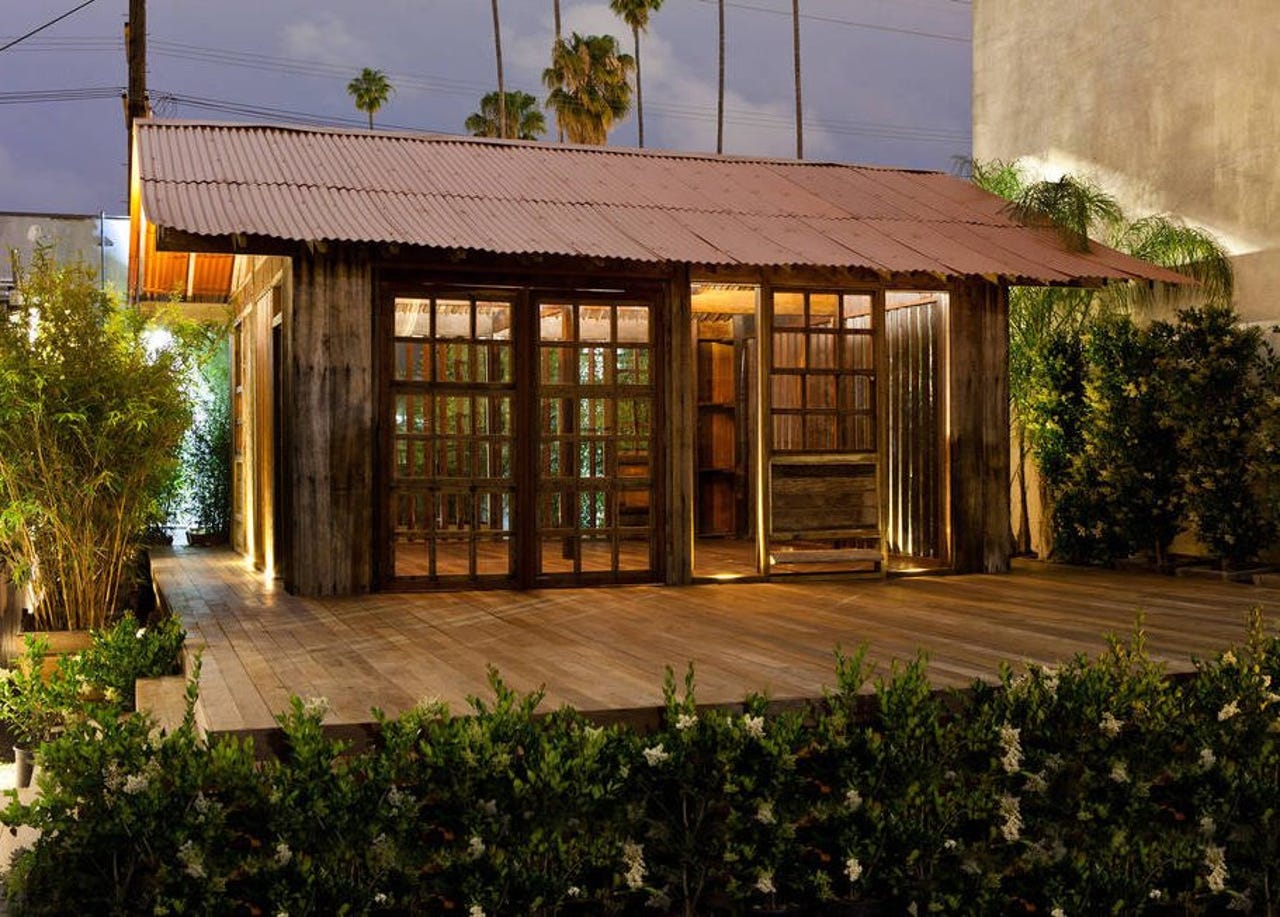Innovation
Collectible architecture, only for the one-percenters
If collecting dollhouses isn't your style, consider these full-size prefabricated designs, many of which harken back to the era of the post-World War II housing boom.

Most people will never own a home by a famous architect. But they might be able to buy a dollhouse designed by one of the world’s 20 top architects, including Zaha Hadid and Make Architects. Last fall their creations fetched plenty of cash for the Cathedral Group, which commissioned the pint-sized playhouses, and it was all donated to the U.K. children’s charity, KIDS.
If you’re not into dolls, here’s another idea: Buy a full-scale prefabricated building or house designed by a famous architect, and have it shipped to your address. It sounds unlikely, but portable and so-called "demountable" dwellings are making waves in the rarefied precincts of design collectors. I can hear it now: "Buy a demountable today!"
If demountable buildings become the next one-percenter status symbol, the trend will be more than a bit ironic, considering that this sort of home has been used for everyone from migrant farmworkers in South America to shipyard laborers in the United States and Europe. Many demountable structures were fabricated and shipped off to their intended assembly sites after both World Wars, as emerging industrial methods suggested cheaper ways to mass-produce housing.
After World War II, in fact, demountables became a staple of veterans’ temporary housing in the United States, Canada and Europe.
But today, you can stop by a gallery in Los Angeles, Miami or Paris and find a full-scale house from a serious architectural lineage—yours for a price. Granted, the price tags might make you faint—six figures and seven figures, for the truly collectible, prefabricated structure.
Consider: A salvaged old-growth Ipe wood hut by one of Brazil’s greatest architects, originally built in the Bahia region of Brazil, was recenly disassembled, moved and rebuilt at Thomas Hayes Gallery in Santa Monica, Calif. Called "Demountable House" by Jose Zanine Caldas, its installation was overseen by the architect’s son, Zanini de Zanine, and one of Caldas' original master craftsman, Reduzino. (Photo below.)

Zanine died in 2001, a couple of years after he was the subject of a retrospective at the Louvre Museum, with one of his demountable houses standing inside the museum. He was self-taught, and successful enough to collaborate with the famed Oscar Niemeyer and Lúcio Costa, the pair who designed the space-age structures of capital city Brasilia. Zanine designed permanent homes in Brazil, and his one-of-a-kind furniture designs of exotic Brazilian hardwoods caught the eye of many design collectors.
Another demountable house by another self-taught architect—Jean Prouvé of France—was on the auction block this winter, attracting investors at the Design Miami fair.
A gallery from Paris known for collectible furnishings, lamps and other design pieces stole the show by bringing along the entire house. As reported in Architectural Record, the prefabricated, one-room house designed by Prouvé in 1945, carried a pricetag of $2.5 million. (A photo of the structure is the main image that accompanies the headline for this article.)
Prouvé earned a reputation as an innovator with industrial techniques, such as creating high-strength structures of lightweight folded steel. The house brought to Miami by Galerie Patrick Seguin has a freestanding axial frame of bent steel, the signature move of the prefabricated, experimental dwelling, called "Maison Démontable 8x8." Timber panels add warmth to the shelter’s walls.
From World War to art fair
During the second World War, France’s Ministry of Reconstruction and Town Planning awarded Prouvé with an order for emergency housing. About 160 of these house kits were made starting in 1944 to house war victims in Lorraine, but few were erected and most were destroyed. One remains at the site of Prouvé’s house, which he used as a studio until he died in 1984.
Metal was in short supply at the time, so the wood panels made the “shacks” appealing to the government. The product was readily transported and dismantled, as thankful villages that had endured bombings soon found. Two people could put up a house in about 10 hours.
According to Patrick Seguin, about 17 of various kinds of demountable houses are available for sale through his Paris gallery.
When the original is not available, however, some fans of collectible architecture just find the designer’s plans and build a replica. This also happened at Design Miami, where Louis Vuitton funded the work of another French midcentury star, Charlotte Perriand (1903-1999).
Luxury goods
Perriand’s "Maison au Bord de l’Eau" (translation "house by the water") was built about 80 years after it was designed for a magazine competition, on the property of the Raleigh Hotel. The architectural writer Alastair Gordon commented that “the house is more fantasy than reality: the radical modernism of Perriand has been cleansed of all social content and turned into a branding tool for the luxury fashion house of [Louis Vuitton Moet Hennessey]” (image below).
It was a big promotion, and a treat for fans of Perriand’s classic “machine-age” furnishings of chrome steel, aluminum glass and padded leather.
Those Perriand originals—and even the collection of Perriand remakes marketed by Cassina—now go for a pretty penny. A kitchen she designed was recently auctioned by Sotheby’s for $60,000, a bargain compared to single bookshelves or chaise lounges that go higher.
Collecting architecture, kitchens and furnishings is definitely not for the faint of heart. And it’s a hot market now. So to collect architecture by famous names, maybe most people will stick with the dollhouses.
Or perhaps doghouses: William Pedersen, a leader of the firm KPF, recently helped raise $15,000 for an animal medical shelter in New York with a spiraling seashell-inspired doghouse.
This post was originally published on Smartplanet.com